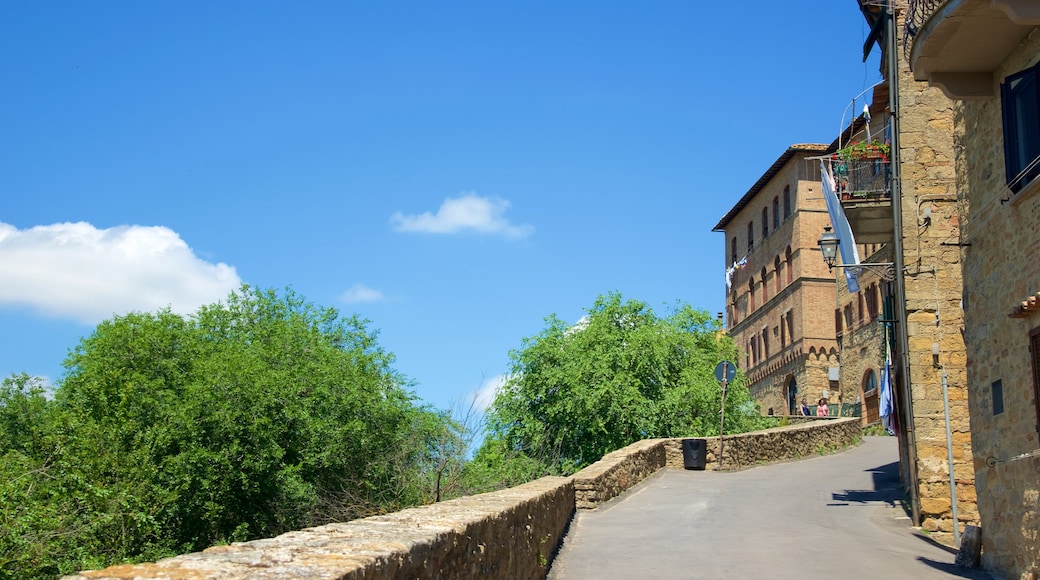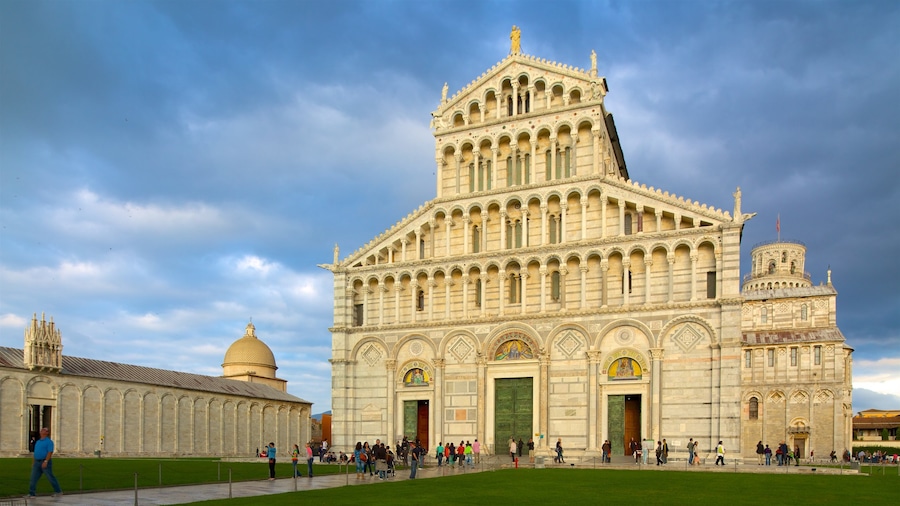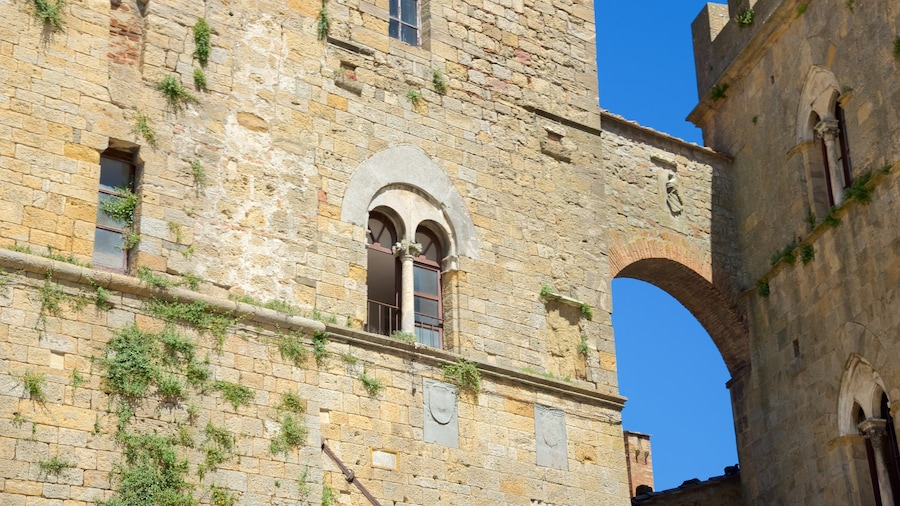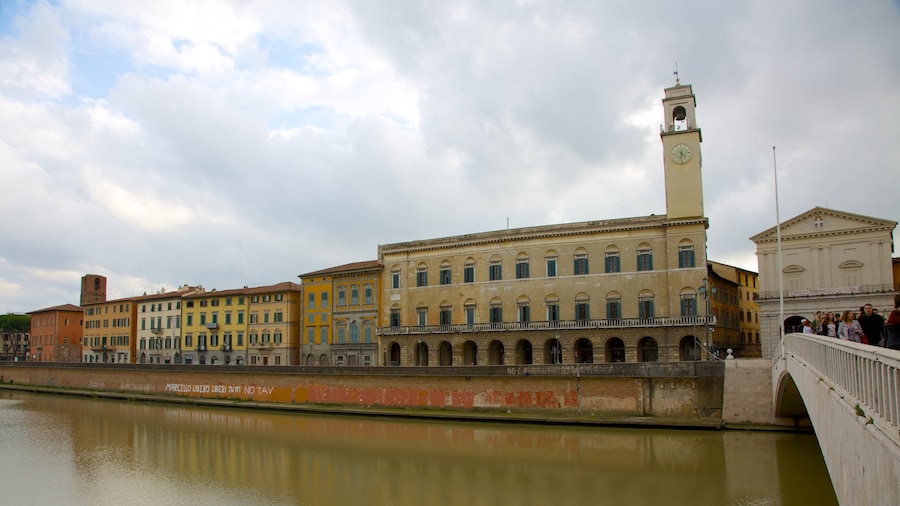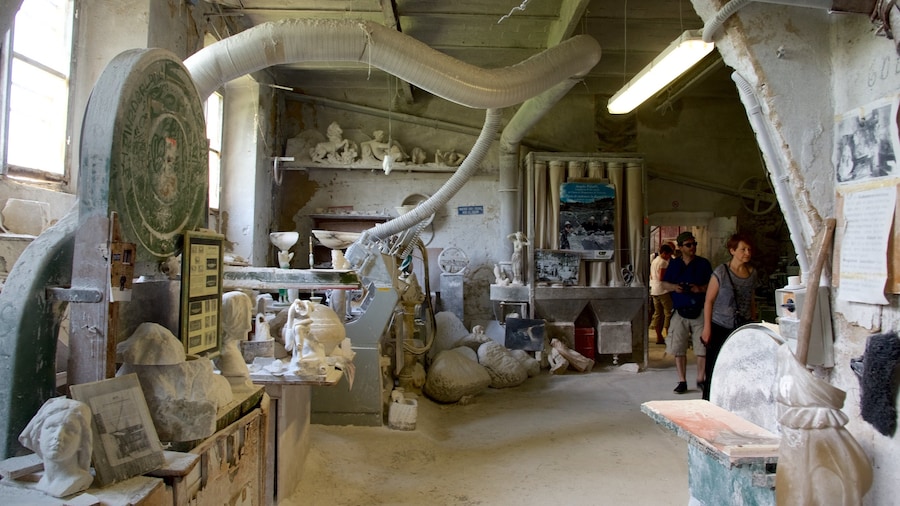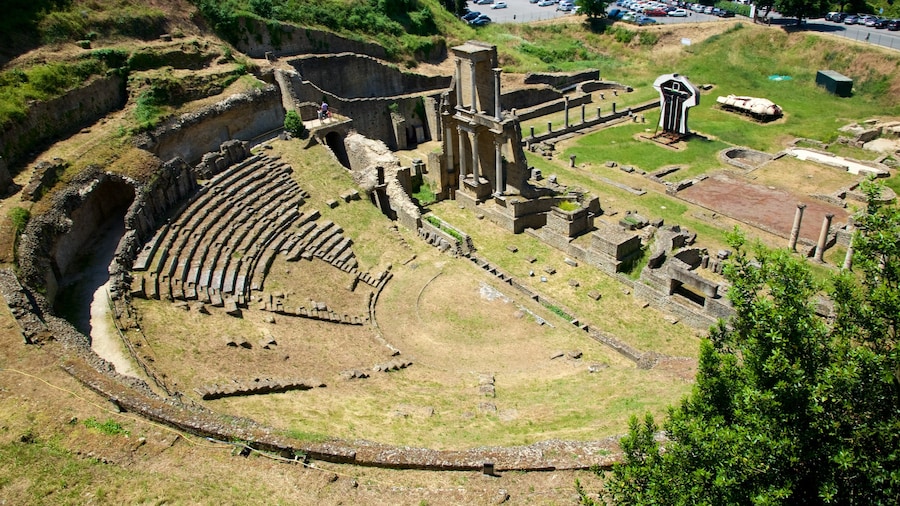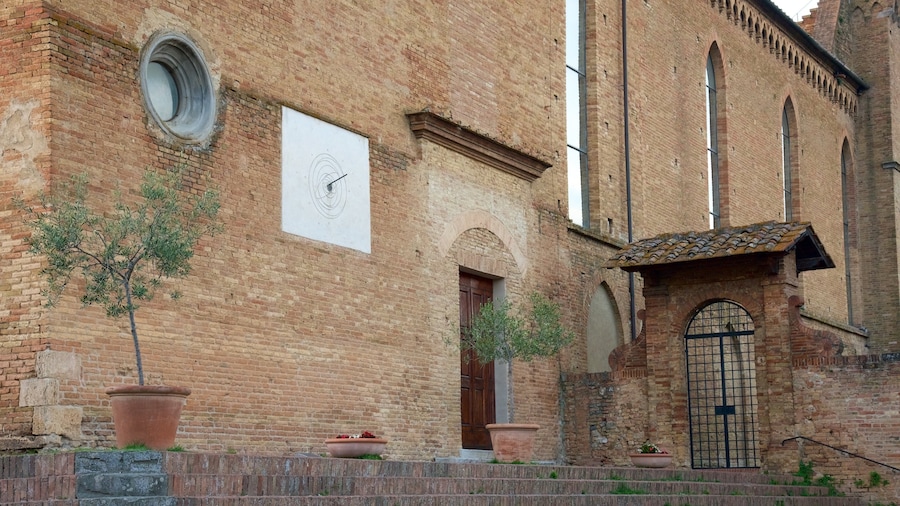Learn about the ancient Etruscan civilization at this city gate, which marks the historic entrance to Volterra.
Step through one of the oldest landmarks in the city at Porta all’Arco. This arched gateway was initially created by the Etruscans, a pre-Roman civilization who first lived in the town. Spend time pondering the mysteries of the earliest inhabitants of Volterra before crossing the arch to explore the charming Tuscan old town.
Look for varying details in the arch from different centuries of Etruscan life. The doorposts, crafted from sandstone, date back as early as the 4th century B.C. The arch and statues were built slightly later in the following centuries. Medieval fortifications replaced the Etruscan walls in the 13th century, but this gate was incorporated into the new perimeter.
Spot the three heads that adorn the arch of the gate. Two millennia have weathered away the detail on these ancient features, making it difficult to know what exactly they represent. Some suggest that they are Jove, Juno and Minerva, the guardian gods of Volterra.
Learn more about the arch and the people that made it at the Guarnacci Etruscan Museum. See an ancient illustration of the gateway under siege to get a sense of what it looked like in the past. Beautifully carved funerary urns and interactive exhibits help to bring this mysterious period of history to life.
Stroll underneath the arch to enter the heart of Volterra’s old town. Walk for 5 minutes north to discover Piazza dei Priori, an immaculately preserved medieval square. Its main attraction is the Palazzo dei Priori, which was built in the 13th century and today functions as Volterra’s town hall. The Cattedrale di Santa Maria Assunta is a similarly short walk from the gateway and offers a spectacular interior, decorated with impressive religious artwork.
Porta all’Arco is located near the center of Volterra. Ride a bus to the bottom of Via Porta all’Arco then wander up the slope to find this ancient monument. Alternatively, walk here while exploring the historic town of Volterra on foot.


